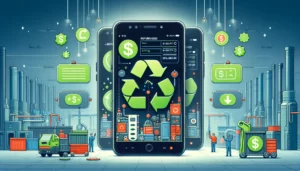Application development is one of the most promising areas to excel in Information Technology (IT). After all, a multitude of industries need to create innovative digital solutions on a daily basis: hospitals, supermarkets, universities, industries, etc. This makes this market very broad. In this context, those who have ambitions in the IT career need constant updates on the prototypes and wire-frames. But you know what they’re for? These are features that mimic the structure of a future program (another application) or site to test it. That is, they anticipate assembly and possible errors in applications that are still under construction. For this, these prototypes are simpler, made without concern for the final details of the tool, such as interface design. Want to know more? So, follow in this post eight incredible tools that can contribute to your professional advancement. Check out!
1. Axure
Created in 2002, Axure is a prototype tool well known to professionals in the field for its ability to offer a wide range of tests, especially for the interactive functions essential to those who are producing a game design, for example. Doing these experiments, however, requires some mastery over the Axure features. It provides prototypes and wireframes with flowcharts, forms, and dynamic elements that can be edited in a personalized way. The entire UX (User Experience) can be tested in a group, since the data of a project can be shared. In this way, the employees involved will always have access to the latest modifications in the prototype. More than that: the group of developers can also divide the perceptions that each one is noticing during these experiments, which greatly facilitates teamwork.
2. Sketch
One of the most popular technology features in the industry, Sketch is designed exclusively for Mac OSX users. It’s compared to Adobe Illustrator, but many designers find Sketch even easier to explore. This software makes a good compression of the files, which facilitates the circulation of data among the members of the IT team. Sketch also helps you to design interfaces, websites, and icons. With the Sketch Mirror app, you can preview the platform on mobile devices. So, you have a good idea of how the application will operate in practice.
3. Balsamiq Mockups
For those who think that hiring a web design agency in Dubai is expensive, Balsamiq Mockups can be very useful. It works as if the user were drawing with the pencil on a sheet of paper. This, of course, in a digital version. Thus, it is feasible to drag the components of a screen from one place to another, resizing the interface very quickly. This app has 75 pre-set controls, which are able to project from a simple dialog box to slightly more complex applications. There is, however, one caveat: wire-frames produced by Balsamiq are generally of the “low fidelity” type. This means that they have slightly more limited capabilities for testing prior to application development. High fidelity prototypes, as the name implies, have extra tools that bring them closer to the reality of future apps. This application, although more used for unreliable prototypes, also produces wire-frames of high similarity. On the other hand, low fidelity Balsamiq prototypes are created much faster.
4. InvisionApp
Considered simple to use, InvisionApp will make your application development win the first few elements in a few clicks. When a prototype in this software is completed, it is simple to add interesting features such as animations or transition effects between pages. Invison also offers the option to open on mobile devices. Another benefit of it is the high fidelity, which surpasses many of the solutions available in the market.
Thus, it is highly recommended for more feedback from users, as their options for experimenting with customers are broader. Consumers can even leave comments on how impressed they were with the usability of this wire-frame.
5. FramerJS
FramerJS is another tool that creates wire-frames with interactions, both for the prototyping of entire applications and for specific animations for websites, among other features. For developers who are not very familiar with the codes, FramerJS is highly appropriate. That’s because he makes charts with automatic numbers on the left side of the screen.
6. OmniGraffle
Specific to iOS and Mac, OmniGraffle has a drag-and-drop feature that is easy to understand. This application has been heavily employed to test the flow of navigation. The disadvantage of it is limited collaboration among team members, since this software does not run on any hardware.
In addition to creating prototypes and wire-frames, OmniGraffle has brainstorming capabilities among its participants. The virtual templates are drawing-based, which makes the experience more fluid, with more resources to give wings to creativity.
7. Adobe XD
Software developed by Adobe, the Adobe XD app is great for producing high-fidelity prototypes. It enables the formulation of interfaces with the use of text and vector tools. To do this, activate the feature in the “Design” tab. In the “Prototype” option, a preview of your wire-frame will appear, which can be shared.
8. MockFlow
MockFlow is yet another tool for wire-frames to be designed by users as a simple tool. It has mechanisms, such as text boxes, slideshows and Dropbox, that make development easier. Another quality is instant collaboration, since it offers interaction chats. The design comes pre-completed, which contributes to the familiarization of novice developers with their interfaces. One of its key benefits is flexibility. This is because this application provides graphics capabilities to make specific wire-frames for iPad, iPhone, Facebook and Android.
Conclusion
The prototypes and wire-frames, therefore, are crucial in the development of applications. After all, they can increase the efficiency of technology products and, at the very least, reduce the efforts needed to do so. In this way, a designer enhances their skills. So that old dream of joining a successful IT team will come closer.
The wire-frame helps designers know which screens they will be and how they should be laid out. The wire-frame helps developers get questions about what behaviors, features, and more will be like. The wire-frame helps you show your customer what you have in mind and thereby increase your chances of receiving better feedback. So, this tool can help you a lot in the process of developing an interface. It is something simple, inexpensive, editable and can predict and avoid problems.




